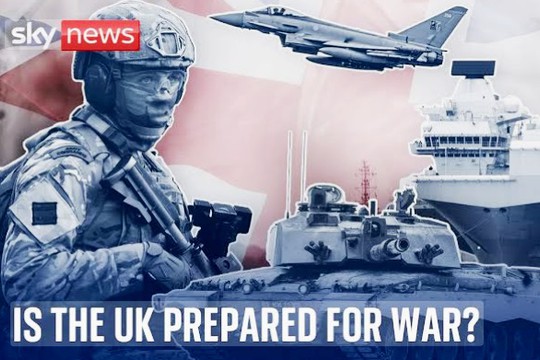Britain may not be at war, but the backdrop to next Monday’s strategic defence review is the greatest geopolitical uncertainty since 1945, ‘The Guardian’ reports.
A set of loosely interconnected conflicts – led by Russia’s continued assault on Ukraine and its related shadow war in Europe, and Israel’s seemingly unending war on Hamas, which may lead to an attack on Iran – have not at all been restrained by a skittish White House with little interest in helping to promote peace in Europe.
One of the three-strong review team is Fiona Hill, who was briefly and famously an adviser to Donald Trump in his first term. She is so worried about the disintegration of postwar norms that she believes the world is drifting towards a “scenario that you had in world war one” where, in the run-up to the war, “suddenly all these different interests and these different conflicts became, you know, basically intertwined with each other, [and] it becomes extraordinarily hard to disentangle”.
Solving problems like these is likely to be beyond the ability of the 130-page document, jointly written by Hill, George Robertson, a former Nato secretary general, and Richard Barrons, a retired British army general. But its remit has been helped by the fact that difficult decisions about which equipment programmes to invest in and to cut have been deferred to a separate command paper in the autumn. Meanwhile, headline budgets to increase defence spending to 2.5% of GDP by 2027 have already been announced by the prime minister, in February.
In the past, defence reviews have done a poor job of prediction. Boris’s Johnson’s 2021 integrated review, published in the aftermath of Brexit, emphasised a British tilt to the far-off Indo-Pacific, supported by occasional flag-flying visits from the Royal Navy’s two new aircraft carriers that cost £6.2bn. But with Britain pouring more than £3bn a year of arms into Ukraine, the last review’s goal to have a “greater and more persistent presence” than any other European country in the Indo-Pacific looks irrelevant.
This review’s principal task is likely to be descriptive, though it runs into two difficulties: people and money. Statistics out this week show again that more people are leaving the military than joining. Army numbers are at a 300-year low of 70,860, down 2.3% over the past year, despite the backdrop of the war in Ukraine. The numbers of RAF and naval personnel have fallen by similar proportions, meaning that, according to one naval source, the navy can crew only four of its six Type 45 destroyers.
A commitment will be made in the defence review to invest a further £1.5bn in military accommodation, including urgent renovation for the 1,000 worst homes, a longstanding source of complaint. But in recent years the British military has had relatively few positive stories to tell, not least because it has been relatively inactive on operations, with the fraught rescue from Kabul in August 2021 the most significant recent effort. It was followed by the smaller airlift of 2,450 Britons and other western nationals from Sudan in the spring of 2023 as a civil war broke out.
Although Labour promised a modest increase in defence spending in February, amounting to £5.3bn a year in real terms when the increase from the current 2.33% of GDP to the promised 2.5% goes through, the Ministry of Defence (MoD) has an extraordinary capacity to soak up money.
A more immediate problem for the British military is how to resource and sustain a commitment to participate in a European-led “reassurance force” for Ukraine, currently promised in the event of a durable ceasefire, if Russia can be persuaded to agree. A British contribution might amount to a brigade of a few thousand, as well as some command and control functions, though finding the troop numbers is likely to be a stretch, suggesting there will be more calls for extra spending.
Alliance members are considering a proposal from Mark Rutte, NATO’s secretary general, to be tabled at its June summit in The Hague, to increase core defence spending to 3.5% by 2032, with a further 1.5% on cyber and transport and other military-related infrastructure. That would match Trump’s demand that NATO members spend 5% of GDP on defence.
read more in our Telegram-channel https://t.me/The_International_Affairs

 12:20 02.06.2025 •
12:20 02.06.2025 •























